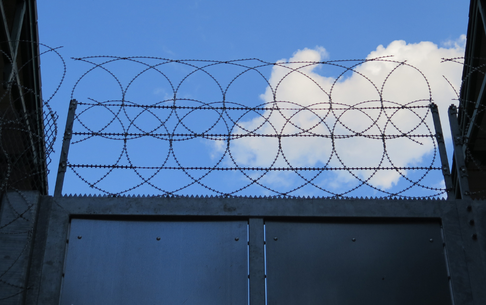Publicado em 5/09/2024 as 4:00pm
How to install composite decking?
Composite decking is a stylish and lower maintenance way to upgrade and enjoy your outdoor...
Composite decking is a stylish and lower maintenance way to upgrade and enjoy your outdoor space. Knowing how to install composite decking can make your outdoor space look beautiful and more durable. Whether you're ready to install your deck yourself or hire a contractor, planning and designing your deck is essential. Let's take a look at the key considerations for deck installation and the building process, no matter how you plan to install it.

Things to consider before building composite decks
To build a composite deck, you first need to install the substructure of the deck and then the composite deck itself. The key steps for deck installation are listed below:
-
Gather all the tools and materials needed
Position the deck
Secure the deck
Installing fasteners
Before looking at how to install a composite deck, however, homeowners need to consider a number of elements that affect the overall design. This includes layout, materials and long-term deck maintenance.
Building the substructure
The substructure of a composite deck will support the entire deck. So before the deck building process, make sure the substructure and framing are properly built first.
Before you start building the underframe, it is important to finalize the deck design and deck materials. Depending on the design, there are different methods of installing a deck.
If you plan to build the deck over concrete, separate substructure rules need to apply. You'll need to ensure drainage and airflow under the deck to keep it safe and durable. And regardless of your deck material, keep the final deck height in mind.
Pay Attention to Seams Between Decks
Seams between decks can make your deck look uneven or improperly installed. Without proper planning, this can create gaps in your design. Consider using butt joints, laying your deck diagonally, or using barrier boards. These actions can help control deck seams and keep them consistent with the original design.
Consider ambient temperature fluctuations
Different temperatures and environments can affect the needs of deck construction. In hotter environments, wood may expand causing warping, which can affect the structure of the deck. Similarly, colder environments can cause traditional wood to shrink or even crack.
Composite decking is made from a blend of recycled plastic and wood fibers, creating a weather-resistant material. Because the wood fibers are reinforced at high temperatures, they require less maintenance later and are more resistant to ambient temperatures.
How to Install a Composite Deck
Once you've established the basics of the design and infrastructure, it's time to start installing the deck.
Preparing Tools and Materials
Before you start building your deck, make sure you have checked all the items needed in your checklist. Here are the basic materials and tools you'll need to install a composite deck:
Pole clips
Chalk line
Circular saw
Drill bits
Hidden fastener tool
Jigsaw
Tape measure
Rubber mallet
Sawing frame
Speed square
Miter saw
Pencil
Composite deck fasteners
Composite Deck
Positioning the Deck
At this stage, the homeowner must accurately place and install the deck to ensure the rest of the steps go smoothly. Consider the positioning of the deck boards and whether the design and color variations used are right for you.
1. Determine your eavestrough installation. If you are installing your eave boards underneath the deck rather than flush with the top of the deck, the deck should hang approximately 3/4 inch above the eave boards. Consult your manufacturer for specific installation requirements for overhang guidelines.
2. place the first board on the deck aligned left and right along its positioning.
3. use a ruler and pencil to mark the position of the posts on the boards.
4. use a jigsaw to cut notches and place boards on the deck's frame.
Securing the First Deck
Now that your prep work is complete, it's time to secure the first piece of decking. When installing, be sure to use matching composite deck fasteners to ensure optimal design and structural solidity.
1. pre-drill holes in the deck as needed:
We recommend fastening 1” from the edge of the board.
Use a square ruler to locate and a 1/8-inch wood drill bit to drill each fastener hole.
2. use composite deck screws or plugs to fasten the deck boards to the framing to install the deck boards.
3. If you are using composite screws, be sure to install them flush with the top of the deck.
4. Secure the deck to the frame.
Installing the Universal Fasteners
After installing the first board, the next step requires installing universal fasteners for subsequent installations. While the use of screws is optional, these universal fasteners will ensure a neat appearance and correct clearances.
1. cut a piece of deck board 1.5 inches wide.
2. place the clip into the groove of the deck board piece and use it as a wedge to hold the clip in place for installation.
3. install universal fasteners using a drill bit while fastening the block to the clamps to maintain their exact position. After installing fasteners for the entire length of each board, slide the next board into place, then return and tighten all fasteners into place.
When installing the final deck on the house, make sure it maintains the correct angle between the house and the hidden fasteners.
1. Check your final deck position.
2. use a pry bar to tighten the deck boards to the clamps, making sure not to over-tighten.
3. install the surface fasteners on the house in the same manner as you installed the first deck.
4. Repeat this process on each joist.
With the fasteners installed, your deck is almost complete. Only a few finishing touches are needed to ensure that the complete design and safety of your building can be presented to viewers.




